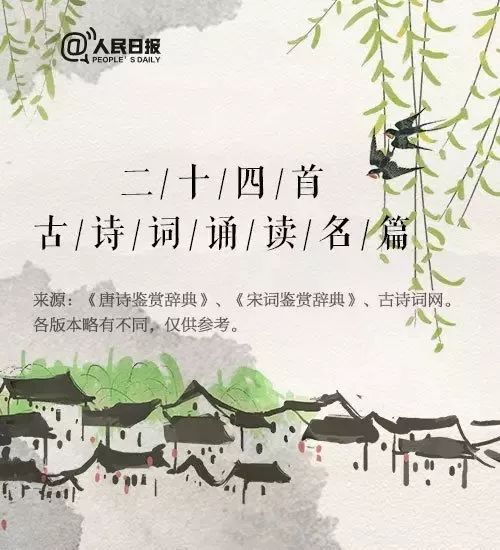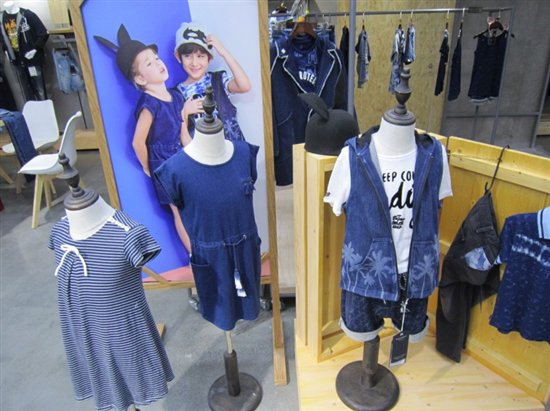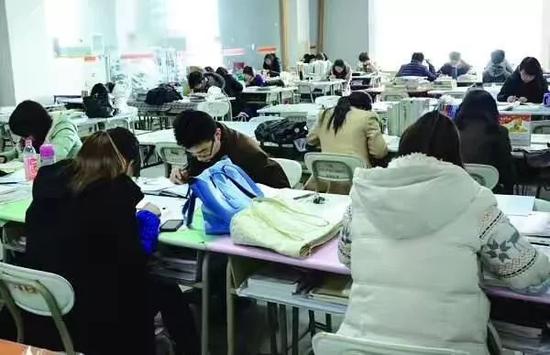- 热门资讯
- 头条关注
- 精选图片
Part I Writing (30 minutes)
Directions: For this part, you are allowed 30 minutes to write a short essay on the following topic. You should write at least 120 words but no more than 180 words.
Suppose a foreign friend of yours is coming to visit your hometown, what is the most interesting place you would like to take him/her to see and why?
注意:此部分试题请在答题卡1上作答。
Part II Listening Comprehension (30 minutes)
Section A
Directions: In this section, you will hear 8 short conversations and 2 long conversations. At the end of each conversation, one or more questions will be asked about what was said. Both the conversation and the questions will be spoken only once. After each question there will be a pause. During the pause, you must read the four choices marked A), B), C) and D), and decide which is the best answer. Then mark the corresponding letter on Answer Sheet 1 with a single line through the centre.
注意:此部分试题请在答题卡1上作答。
1. A) See a doctor about her strained shoulder.
B) Use a ladder to help her reach the tea.
C) Replace the cupboard with a new one.
D) Place the tea on a lower shelf next time.
2. A) At Mary Johnson’s. C) In an exhibition hall.
B) At a painter’s studio. D) Outside an art gallery.
3. A) The teacher evaluated lacks teaching experience.
B) She does not quite agree with what the man said.
C) The man had better talk with the students himself.
D) New students usually cannot offer a fair evaluation.
4. A) He helped Doris build up the furniture.
B) Doris helped him arrange the furniture.
C) Doris fixed up some of the bookshelves.
D) He was good at assembling bookshelves.
5. A) He doesn’t get on with the others. C) He has been taken for a fool.
B) He doesn’t feel at ease in the firm. D) He has found a better position.
6. A) They should finish the work as soon as possible.
B) He will continue to work in the garden himself.
C) He is tired of doing gardening on weekends.
D) They can hire a gardener to do the work.
7. A) The man has to get rid of the used furniture.
B) The man’s apartment is ready for rent.
C) The furniture is covered with lots of dust.
D) The furniture the man bought is inexpensive.
8. A) The man will give the mechanic a call.
B) The woman is waiting for a call.
C) The woman is doing some repairs.
D) The man knows the mechanic very well.
Questions 9 to 11 are based on the conversation you have just heard.
9. A) She had a job interview to attend.
B) She was busy finishing her project.
C) She had to attend an important meeting.
D) She was in the middle of writing an essay.
10. A) Accompany her roommate to the classroom.
B) Hand in her roommate’s application form.
C) Submit her roommate’s assignment.
D) Help her roommate with her report.
11. A) Where Dr. Ellis’s office is located.C) Directions to the classroom building.
B) When Dr. Ellis leaves his office.D) Dr. Ellis’s schedule for the afternoon.
Questions 12 to 15 are based on the conversation you have just heard.
12. A) He finds it rather stressful. C) He can handle it quite well.
B) He is thinking of quitting it.D) He has to work extra hours.
13. A) The 6:00 one.C) The 7:00 one.
B) The 6:30 one.D) The 7:30 one.
14. A) It is an awful waste of time.
B) He finds it rather unbearable.
C) The time on the train is enjoyable.
D) It is something difficult to get used to.
15. A) Reading newspapers.C) Listening to the daily news.
B) Chatting with friends.D) Planning the day’s work.
Section B
Directions: In this section, you will hear 3 short passages. At the end of each passage, you will hear some questions. Both the passage and the questions will be spoken only once. After you hear a question, you must choose the best answer from the four choices marked A), B), C) and D). Then mark the corresponding letter on Answer Sheet 1 with a single line through the centre.
注意:此部分试题请在答题卡1上作答。
Passage One
Questions 16 to 18 are based on the conversation you have just heard.
16. A) Ignore small details while reading.
B) Read at least several chapters at one sitting.
C) Develop a habit of reading critically.
D) Get key information by reading just once or twice.
17. A) Choose one’s own system of marking.
B) Underline the key words and phrases.
C) Make as few marks as possible.
D) Highlight details in a red color.
18. A) By reading the textbooks carefully again.
B) By reviewing only the marked parts.
C) By focusing on the notes in the margins.
D) By comparing notes with their classmates.
Passage Two
Questions 19 to 21 are based on the conversation you have just heard.
19. A) The sleep a person needs varies from day to day.
B) The amount of sleep for each person is similar.
C) One can get by with a couple of hours of sleep.
D) Everybody needs some sleep for survival.
20. A) It is a made-up story.C) It is a rare exception.
B) It is beyond cure.D) It is due to an accident.
21. A) His extraordinary physical condition.
B) His mother’s injury just before his birth.
C) The unique surroundings of his living place.
D) The rest he got from sitting in a rocking chair.
Passage Three
Questions 22 to 25 are based on the conversation you have just heard.
22. A) She invested in stocks and shares on Wall Street.
B) She learned to write for financial newspapers.
C) She developed a strong interest in finance.
D) She tenderly looked after her sick mother.
23. A) She made a wise investment in real estate.
B) She sold the restaurant with a substantial profit.
C) She got 1.5 million dollars from her ex-husband.
D) She inherited a big fortune from her father.
24. A) She was extremely mean with her money.
B) She was dishonest in business dealings.
C) She frequently ill-treated her employees.
D) She abused animals including her pet dog.
25. A) She made a big fortune from wise investment.
B) She built a hospital with her mother’s money.
C) She made huge donations to charities.
D) She carried on her family’s tradition.
Section C
Direction: In the section, you will hear a passage three times. When the passage is read for the first time, you should listen carefully for its general idea. When the passage is read for the second time, you are required to fill in the blanks with the exact words you have just heard. Finally, when the passage is read for the third time, you should check what you have written.
注意:此部分试题请在答题卡1上作答。
Among the kinds of social gestures most significant for second-language teachers are those which are (26)______ in form but different in meaning in the two cultures. For example, a Colombian who wants someone to (27)______ him often signals with a hand movement in which all the fingers of one hand, cupped, point downward as they move rapidly (28)_______. Speakers or English have a similar gesture through the hand may not be cupped and the fingers may be held more loosely, but for them the gesture means goodbye or go away, quite the (29)______ of the Colombian gesture. Again, in Colombian, a speaker of English would have to know that when he (30)________ height he most choose between different gestures depending on whether he is (31)_______ a human being or an animal. If he keeps the palm of the hand (32)_________ the floor, as he would in his own culture when making known the height of a child, for example, he will very likely be greeted by laughter, in Colombia this gesture is (33)_________ for the description of animals. In order to describe human beings he should keep the palm of his hand (34)_________ to the floor. Substitutions of one gesture for the other often create not only humorous but also (35)________ moment. In both of the examples above, speakers from two different cultures have the same gesture, physically, but its meaning differs sharply.
Part III Reading Comprehension (40 minutes)
Section A
Directions: In this section, there is a passage with ten blanks. You are required to select one word for each blank from a list of choices given in a word bank following the passage. Read the passage through carefully before making your choices. Each choice in the bank is identified by a letter. Please mark the corresponding letter on Answer Sheet 2 with a single line through the centre. You may not use any of the words in the bank more than once.
Questions 36 to 45 are based on the following passage.
Global warming is a trend toward warmer conditions around the world. Part of the warming is natural; we have experienced a 20,000 -year -long warming as the last ice age ended and the ice 36 away. However, we have already reached temperatures that are in 37 with other minimum-ice periods, so continued warming is likely not natural. We are 38 to a predicted worldwide increase in temperatures 39 between 1℃ and 6℃ over the next 100 years. The warming will be more 40 in some areas, less in others, and some places may even cool off. Likewise, the 41 of this warming will be very different depending on where you are—coastal areas must worry about rising sea levels, while Siberia and northern Canada may become more habitable (宜居的) and 42 for humans than these areas are now.
The fact remains, however, that it will likely get warmer, on 43 , everywhere. Scientists are in general agreement that the warmer conditions we have been experiencing are at least in part the result of a human-induced global warming trend. Some scientists 44 that the changes we are seeing fall within the range of random (无规律的) variation—some years are cold, others warm, and we have just had an unremarkable string of warm years 45 —but that is becoming an increasingly rare interpretation in the face of continued and increasing warm conditions.
注意:此部分试题请在答题卡2上作答。
Section B
Directions: In this section, you are going to read a passage with ten statements attached to it. Each statement contains information given in one of the paragraphs Identify the paragraph from which the information is derived. You may choose a paragraph more than once. Each paragraph is marked with a letter. Answer the questions by marking the corresponding letter on Answer Sheet 2.
The End of the Book?
[A] Amazon, by far the largest bookseller in the country, reported on May 19 that it is now selling more books in its electronic Kindle format than in the old paper-and-ink format. That is remarkable, considering that the Kindle has only been around for four years. E-books now account for 14 percent of all book sales in the country and are increasing far faster than overall book sales. E-book sales are up 146 percent over last year, while hardback sales increased 6 percent and paperbacks decreased 8 percent.
[B] Does this spell the doom of the physical book? Certainly not immediately, and perhaps not at all. What it does mean is that the book business will go through a transformation in the next decade or so more profound than any it has seen since Gutenberg introduced printing from moveable type in the 1450s.
[C] Physical books will surely become much rarer in the marketplace. Mass market paperbacks, which have been declining for years anyway, will probably disappear, as will hardbacks for mysteries, thrillers, “romance fiction,” etc. Such books, which only rarely end up in permanent collections, either private or public, will probably only be available as e-books within a few years. Hardback and trade paperbacks for “serious” nonfiction and fiction will surely last longer. Perhaps it will become the mark of an author to reckon with that he or she is still published in hard copy.
[D] As for children’s books, who knows? Children’s books are like dog food in that the purchasers are not the consumers, so the market (and the marketing) is inherently strange.
[E] For clues to the book’s future, let’s look at some examples of technological change and see what happened to the old technology.
[F] One technology replaces another only because the new technology is better, cheaper, or both. The greater the difference, the sooner and more thoroughly the new technology replaces the old. Printing with moveable type on paper dramatically reduced the cost of producing a book compared with the old-fashioned ones handwritten on vellum, which comes from sheepskin. A Bible—to be sure, a long book—required vellum made from 300 sheepskins and countless man-hours of labor. Before printing arrived, a Bible cost more than a middle-class house. There were perhaps 50,000 books in all of Europe in 1450. By 1500 there were 10 million.
[G] But while printing quickly caused the hand written book to die out, handwriting lingered on (继续存在) well into the 16th century. Very special books are still occasionally produced on vellum, but they are one-of-a-kind show pieces.
[H]Sometimes a new technology doesn’t drive the old one out, but only parts of it while forcing the rest to evolve. The movies were widely predicted to drive live theater out of the marketplace, but they didn’t, because theater turned out to have qualities movies could not reproduce. Equally, TV was supposed to replace movies but, again, did not.
[I] Movies did, however, fatally impact some parts of live theater. And while TV didn’t kill movies, it did kill second-rate pictures, shorts, and cartoons.
[J] Nor did TV kill radio. Comedy and drama shows (“Jack Benny,” “Amos and Andy,” “The Shadow”) all migrated to television. But because you can’t drive a car and watch television at the same time, rush hour became radio’s prime, while music, talk, and news radio greatly enlarged their audiences. Radio is today a very different business than in the late 1940s and a much larger one.
[K] Sometimes old technology lingers for centuries because of its symbolic power. Mounted cavalry (骑兵) replaced the chariot (二轮战车) on the battlefield around 1000 BC. But chariots maintained their place in parades and triumphs right up until the end of the Roman Empire 1,500 years later. The sword hasn’t had a military function for a hundred years, but is still part of an officer’s full-dress uniform, precisely because a sword always symbolized “an officer and a gentleman.”
[L] Sometimes new technology is a little cranky (不稳定的) at first. Television repairman was a common occupation in the 1950s, for instance. And so the old technology remains as a backup. Steamships captured the North Atlantic passenger business from sail in the 1840s because of its much greater speed. But steamships didn’t lose their sails until the 1880s, because early marine engines had a nasty habit of breaking down. Until ships became large enough (and engines small enough) to mount two engines side by side, they needed to keep sails. (The high cost of steam and the lesser need for speed kept the majority of the world’s ocean freight moving by sail until the early years of the 20th century.)
[M] Then there is the fireplace. Central heating was present in every upper-and middle-class home by the second half of the 19th century. But functioning fireplaces remain to this day a powerful selling point in a house or apartment. I suspect the reason is a deep-rooted love of the fire. Fire was one of the earliest major technological advances for humankind, providing heat, protection, and cooked food (which is much easier to cat and digest). Human control of fire goes back far enough (over a million years) that evolution could have produced a genetic leaning towards fire as a central aspect of human life.
[N] Books—especially books the average person could afford—haven’t been around long enough to produce evolutionary change in humans. But they have a powerful hold on many people nonetheless, a hold extending far beyond their literary content. At their best, they are works of art and there is a tactile(触觉的)pleasure in books necessarily lost in e-book versions. The ability to quickly thumb through pages is also lost. And a room with books in it induces, at least in some, a feeling not dissimilar to that of a fire in the fireplace on a cold winter’s night.
[O] For these reasons I think physical books will have a longer existence as a commercial product than some currently predict. Like swords, books have symbolic power. Like fireplaces, they induce a sense of comfort and warmth. And, perhaps, similar to sails, they make a useful back-up for when the lights go out.
注意:此部分试题请在答题卡2上作答。
46. Authors still published in printed versions will be considered important ones.
47. Some people are still in favor of printed books because of the sense of touch they can provide.
48. The radio business has changed greatly and now attracts more listeners.
49. Contrary to many people’s prediction of its death, the film industry survived.
50. Remarkable changes have taken place in the book business.
51. Old technology sometimes continues to exist because of its reliability.
52. The increase of e-book sales will force the book business to make changes not seen for centuries.
53. A new technology is unlikely to take the place of an old one without a clear advantage.
54. Paperbacks of popular literature are more likely to be replaced by e-books.
55. A house with a fireplace has a stronger appeal to buyers.
Section C
Directions: There are 2 passages in this section. Each passage is followed by some questions or unfinished statements. For each of them there are four choices marked A), B), C) and D). You should decide on the best choice and mark the corresponding letter on Answer Sheet 2 with a single line through the centre.
Passage One
Questions 56 to 60are based on the following passage.
The question of whether our government should promote science and technology or the liberal arts in higher education isn’t an either/or proposition(命题),although the current emphasis on preparing young Americans for STEM(science, technology, engineering, maths)-related fields can make it seem that way.
The latest congressional report acknowledges the critical importance of technical training, but also asserts that the study of the humanities (人文学科)and social sciences must remain central components of America’s educational system at all levels. Both are critical to producing citizens who can participate effectively in our democratic society, become innovative(创新的)leaders, and benefit from the spiritual enrichment that the reflection on the great ideas of mankind over time provides.
Parents and students who have invested heavily in higher education worry about graduates’ job prospects as technological advances and changes in domestic and global markets transform professions in ways that reduce wages and cut jobs. Under these circumstances, it’s natural to look for what may appear to be the most “practical” way out of the problem “Major in a subject designed to get you a job” seems the obvious answer to some, though this ignores the fact that many disciplines in the humanities characterized as “soft” often, in fact, lead to employment and success in the long run. Indeed, according to surveys, employers have expressed a preference for students who have received a broadly-based education that has taught them to write well, think critically, research creatively, and communicate easily.
Moreover, students should be prepared not just for their first job, but for their 4th and 5th jobs, as there’s little reason to doubt that people entering the workforce today will be called upon to play many different roles over the course of their careers. The ones who will do the best in this new environment will be those whose educations have prepared them to be flexible. The ability to draw upon every available tool and insight—picked up from science, arts, and technology—to solve the problems of the future, and take advantage of the opportunities that present themselves, will be helpful to them and the United States.
注意:此部分试题请在答题卡2上作答。
56. What does the latest congressional report suggest?
A) STEM-related subjects help students find jobs in the information society.
B) The humanities and STEM subjects should be given equal importance.
C) The liberal arts in higher education help enrich students’ spiritual life.
D) Higher education should be adjusted to the practical needs of society.
57. What is the main concern of students when they choose a major?
A) Their interest in relevant subjects.
B) The academic value of the courses.
C) The quality of education to receive.
D) Their chances of getting a good job.
58. What does the author say about the so called soft subjects?
A) The benefit students in their future life.
B) They broaden students’ range of interests.
C) They improve students’ communication skills.
D) They are essential to students’ healthy growth.
59. What kind of job applicants do employers look for?
A) Those who have a strong sense of responsibility.
B) Those who are good at solving practical problems.
C) Those who are likely to become innovative leaders.
D) Those who have received a well-rounded education.
60. What advice does the author give to college students?
A) Seize opportunities to tap their potential.
B) Try to take a variety of practical courses.
C) Prepare themselves for different job options.
D) Adopt a flexible approach to solving problems.
Passage Two
Questions 61 to 65 are based on the following passage.
Energy independence. It has a nice ring to it. Doesn’t it? If you think so, you’re not alone, because energy independence has been the dream of American president for decades, and never more so than in the past few years, when the most recent oil price shock has been partly responsible for kicking off the great recession.
“Energy independence” and its rhetorical (修辞的) companion “energy security” are, however, slippery concepts that are rarely though through. What is it we want independence from, exactly?
Most people would probably say that they want to be independent from imported oil. But there are reasons that we buy all that old from elsewhere.
The first reason is that we need it to keep our economy running. Yes, there is a trickle(涓涓细流)of biofuel(生物燃料)available, and more may become available, but most biofuels cause economic waste and environmental destruction.
Second, Americans have basically decided that they don’t really want to produce all their own oil. They value the environmental quality they preserve over their oil imports from abroad. Vast areas of the United States are off-limits to oil exploration and production in the name of environmental protection. To what extent are Americans really willing to endure the environmental impacts of domestic energy production in order to cut back imports?
Third, there are benefits to trade. It allows for economic efficiency, and when we buy things from places that have lower production costs than we do, we benefit. And although you don’t read about this much, the United States is also a large exporter of oil products, selling about 2 million barrels of petroleum products per day to about 90 countries.
There is no question that the United States imports a great deal of energy and, in fact, relies on that steady flow to maintain its economy. When that flow is interrupted, we feel the pain in short supplies and higher prices, At the same time, we derive massive economic benefits when we buy the most affordable energy on the world market and when we engage in energy trade around the world.
注意:此部分试题请在答题卡2上作答。
61. What does the author say about energy independence for America?
A) It sounds very attractive. C) It will bring oil prices down.
B) It ensures national security. D) It has long been everyone’s dream.
62. What does the author think of biofuels?
A) They keep America’s economy running healthily.
B) They prove to be a good alternative to petroleum.
C) They do not provide a sustainable energy supply.
D) They cause serious damage to the environment.
63. Why does America rely heavily on oil imports?
A) It wants to expand its storage of crude oil.
B) Its own oil reserves are quickly running out.
C) It wants to keep its own environment intact.
D) Its own oil production falls short of demand.
64. What does the author say about oil trade?
A) It proves profitable to both sides. C) It makes for economic prosperity.
B) It improves economic efficiency. D) It saves the cost of oil exploration.
65. What is the author’s purpose in writing the passage?
A) To justify America’s dependence on oil imports.
B) To arouse Americans’ awareness of the energy crisis.
C) To stress the importance of energy conservation.
D) To explain the increase of international oil trade.
Part Ⅳ Translation (30 minutes)
Directions: For this part, you are allowed 30 minutes to translate a passage from Chinese into English. You should write your answer on Answer Sheet 2.
为了促进教育公平,中国已投入360亿元,用于改善农村地区教育设施和中强中西部地区农村义务教育(compulsory education)。这些资金用于改善教学设施、购买书籍,使16万多所中小学受益。资金还用于购置音乐和绘画器材。现在农村和山区的儿童可以与沿海城市的儿童一样上音乐和绘画课。一些为接受更好教育而转往城市上学的学生如今又回到了本地农村学校就读。
注意:此部分试题请在答题卡2上作答。
2014年6月四级部分真题参考答案(完整版)
Part Ⅰ Writing
The First Place I Will Show in My Hometown—the Central Avenue
My hometown is Harbin. The most interesting place which I would like to take my foreign friends to is the Central Avenue, if they come to my hometown. The reasons for this can be illustrated as below.
To begin with, as the symbol of Harbin, the Central Avenue not only has a long history, but also a famous food palace. There are a variety of delicious foods for you to choose. Just take the ice-cream brick of Ma Dieer as an example. Many of tourists to the Central Avenue sing their praises for the ice-cream brick of Ma Dieer. In addition, the brilliant historic culture of the Central Avenue can widen people’s vision and enhance their knowledge, which lays a solid foundation for the understanding of this fabulous city—Harbin.
I believe my foreign friends will enjoy themselves in the Central Avenue. Not only can they appreciate the wonderful landscape of Harbin but also taste authentic northeast food. No better place can be chosen than the Central Avenue!
Part Ⅱ Listening Comprehension
1-5: BDDCD
6-10: ADBAC
11-15: ACBCA
16-20: DABDC
20-25: BCDAB
26. identical
27. approach
28. back and forth
29. opposite
30. indicates
31. referring to
32. parallel to
33. reserved
34. at the right angle
35. embarrassing
Part III Reading Comprehension
Section A
36. melted
37. line
38. contributing
39. ranging
40. dramatic
41. impact
42. appealing
43. average
44. maintain
45. recently
Section B
46. C Physical books will surely become much rarer in the marketplace….
47. N Books—especially books the average…
48. J Nor did TV kill radio…
49. H Sometimes a new technology doesn’t…
50. A Amazon, by far the largest…
51. L Sometimes old technology lingers for…
52. B Does this spell the doom of the ….
53. F One technology replaces another only…
54. C Physical books will surely become much rather…
55. M Then there is the fireplace…
Section C
56. B The humanities and STEM subjects should be given equal importance.
57. D Their chances of getting a good job.
58. A They benefit students in their future life.
59. D Those who have received a well-rounded education.
60. C Prepare themselves for different job options.
61. A It sounds very attractive.
62. D They cause serious damage to the environment.
63. C It wants to keep its own environment intact.
64. B It improves economic efficiency.
65. A To justify America's dependence on oil imports.
Part IV Translation
In order to promote equality in education, China has invested 36 billion Yuan to improve educational facilities in rural areas and strengthen rural compulsory education in Midwest areas. These funds are used to improve teaching facilities, and purchase books, benefiting more than 160,000 primary and secondary schools. Funds are used to purchase musical instrument and painting tools as well. Now children in rural and mountainous areas can have music and painting lessons as children from coastal cities do. Some students who has transferred to city schools to receive a better education are now moving back to their local rural schools.
 手机版
手机版
 | 新闻频道
| 新闻频道


























